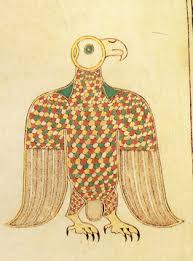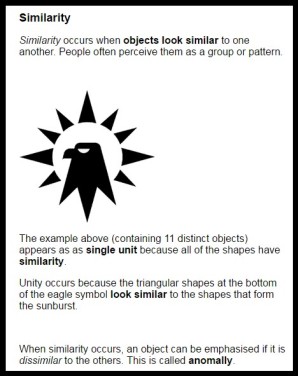Last week I attended “Colour: The Art and Science of Medieval Manuscripts”, a conference held at Cambridge Chemistry Department inspired by the fantastically wonderful Colour Exhibition at The Fitzwilliam Museum in Cambridge. (If you haven’t been yet – GO!)
I went as PhD student to “Team Pigment”.

The Eagle from the Book of Durrow
The conference is going to give me A LOT of food for thought as I’m a chemist and an historian, and this conference aimed to bring both the art and science of manuscript studies together. Great for me! I’m going to capture some of the musings in this blog.
First up, with the opening paper, was Dr. Heather Pulliam from the University of Edinburgh, delivering Cognition, Chemistry and Digitisation in Insular Manuscripts.
What a great way to open the conference! Her images, particularly of the Lindisfarne gospels gave us something to feast our eyes on, and I particularly was keen to learn more on some of the Visual Culture aspects of manuscript design. I’ve been looking at colour, sensation and perception with Bob Kentridge and Charlie Heyward in the psychology department of Durham University and this seemed to be a subject specific tie in of manuscript and psychology. Perfect!
I’m not going to retell her paper here – I’m sure Dr. Pulliam wouldn’t thank me, but her talk inspired me to learn more about Gestalt theory, which I am sure my research will make use of – this website page gives a fun, clear and interesting precis.

Gestalt Theory
Particularly (possibly) relevant to my own work is the impact of fading of pigments used in designs fading. The eagle in The Book Of Durrow, as arresting an image as it is now, was possibly even more vibrant as its edges vibrated with the clashing coloured pigments back when the hue and intensity of the clashing pigments was an exact match, maximising it’s visual impact.
Ideas about whether or not the illuminators knew that pigments would degrade and fade and used this knowledge in their work to produce mottling effects was discussed, and debated afterwards. What do I think? Illuminators would probably have known which pigments were unstable – due to looking at past manuscripts – and clearly these were people knowledgeable about what they were doing, given the wonderful art they have produced. So I think they knew which pigments would degrade – but did they care that manuscripts would degrade generations later? And with the nature of degradation being sporadic – I don’t think they could have “planned” to have effects happen.
Also in the talk was the idea of “slow looking” which as a concept seems fairly accessible to understand but is actually hard to practise in our fast paced bite-sized modern world. How manuscripts were viewed by their audience – by candlelight, slowly, with a “period eye” is something to bear in mind.


